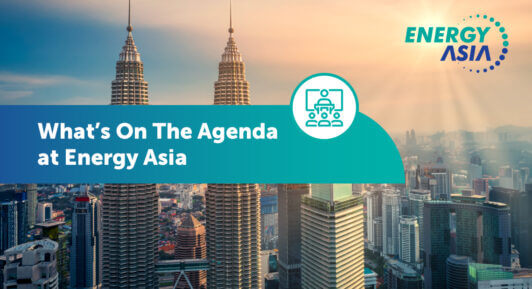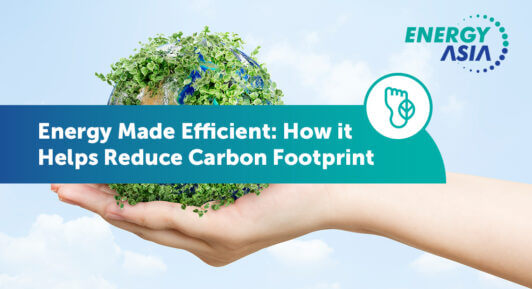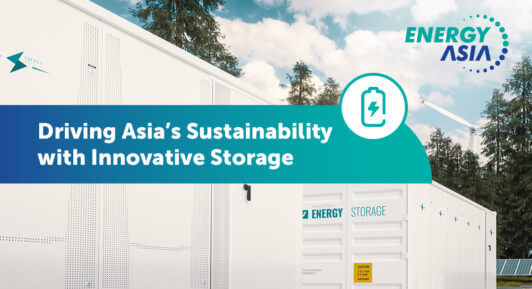Green Technology and Energy Transition with Microsoft
Technology will have a huge role to play in driving a net-zero future, as part of a collaborative ecosystem that brings together stakeholders from across industries. That was a core theme of the illuminating discussion with Srikant Kadambi, Managing Director for Energy and Sustainability, Microsoft Asia, speaking recently to BFM 89.9.
“Energy Asia is a wonderful platform, and really if you look at the participation at Energy Asia it’s very cross-sectoral… if you look at the people participating it comes across not just sectors but also in terms of the ecosystem,” said Srikant, referencing the role of collaboration and his upcoming attendance at Energy Asia.
Collaboration has played an increasingly critical role in the evolution of technology in recent years, as players from across the technology ecosystem have come together to solve both industry and global challenges.
“If we look at cross-sector collaboration, in my opinion, look it’s come of age even prior to this whole dialogue around driving sustainable energy practices…we all came to realise what is required to deliver an outcome using sophisticated digital tech, the entire knowhow or domain knowledge doesn’t reside with just one entity, it expands across entities,” said Srikant.
Partnership is now a pivotal part of an effective technology business, and global leaders like Microsoft are at the forefront of this transformation. And like any business in the modern landscape, sustainable practice and sustainable ecosystems are a core part of how they operate. With Microsoft’s major role as a global technology provider, it’s also an important part of their offering to support clients and industries across the world.
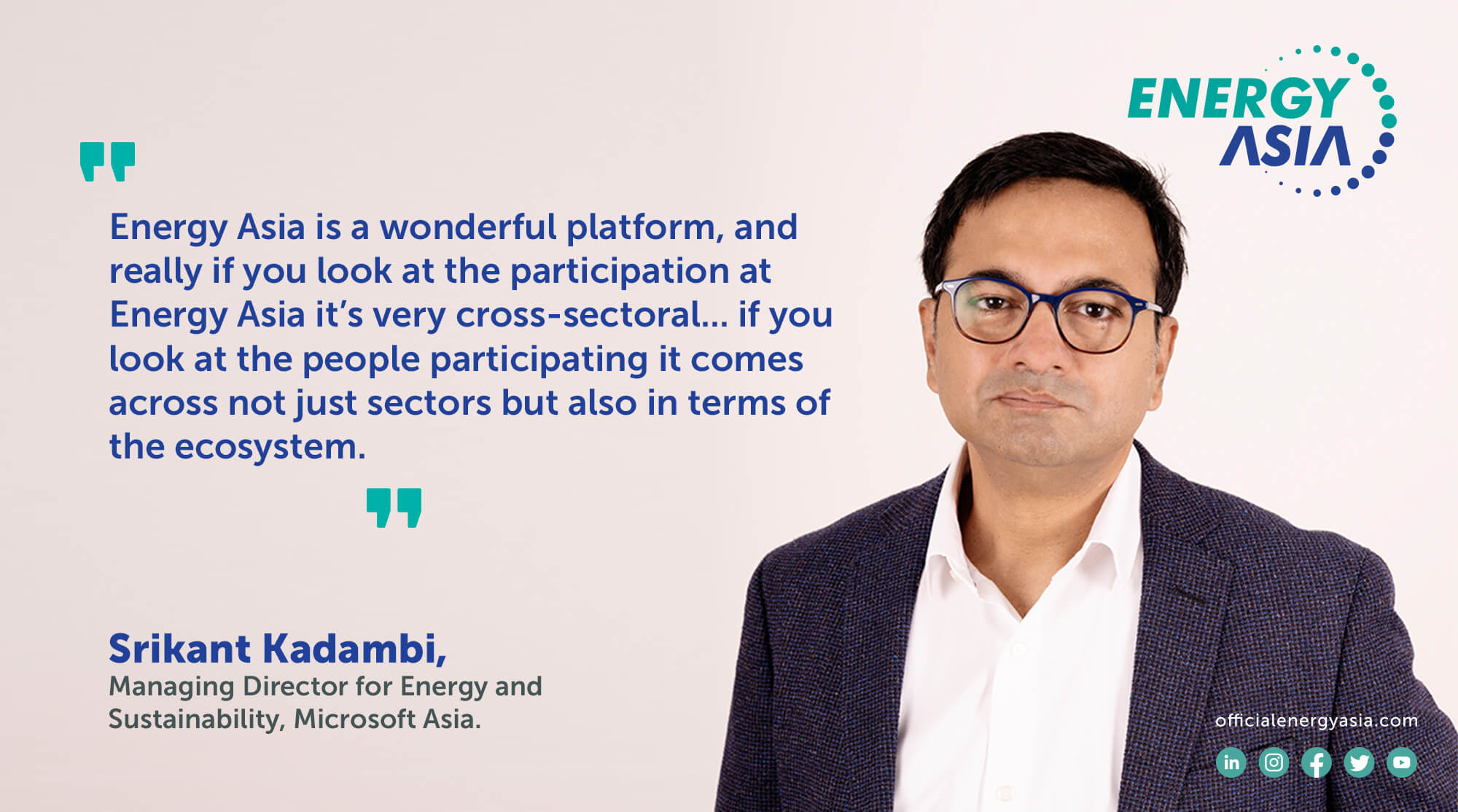
Technology and its climate role
The technology landscape has seen a period of significant transformation over recent years, as the long-promised capabilities of artificial intelligence (AI) have stepped firmly into the global spotlight.
Generative AI technologies such as ChatGPT have brought the power of AI into the public consciousness, at a pace Srikant described as delivering a “completely different landscape” over the last 12 to 18 months. Yet beneath the foundations of generative AI solutions is an impressive framework with implications beyond the ability to generate user-facing content. That’s something Microsoft is keen to leverage, with capabilities that can have important implications for the energy transition.
“We [Microsoft] come into play in terms of offering these AI frameworks as I call them, that provides the optionality to apply some of these very advanced frameworks that empowers power producers to optimise pretty much every green electron in terms of how they produce it, whether they choose solar wind, leverage battery storage, whether it’s hydro, they can also explore how they depower their coal plants while something like a what we can nuclear SMR—small modular reactor technology.”
The direction of travel is already clear in the energy technology investment landscape. According to the International Energy Agency (IEA), investment in grid-related digital technologies grew 50% between 2015-2021, accounting for almost one-fifth (18%) of total grid investment in 2021. The power sector as a whole spent USD55 billion on digital technologies in 2021, a 13% increase on 2020.
The potential of digital technologies and partnership goes way beyond the power industry alone, however. Srikant highlights that Microsoft is working closely with industry partners to explore how next-generation solutions can address challenges across multiple industries.
The needs and demands of energy-intensive industries such as cement or manufacturing will be distinctly different from those of the technology industry itself. This is about creating scalable green technology solutions that can deliver true societal impact, solving problems, as Srikant puts it, “within a sector, or similar types of problems across sectors.”
This cross-sector approach is a foundation of Energy Asia’s ambition, to drive actionable solutions in partnership with a wide range of stakeholders, ensuring that we can all work together to chart sustainable pathways for Asia.
“It will have to be a cross-ecosystem collaboration, whether it’s government agencies, customers, advisories, consulting firms, startups. The ecosystem, with thought providers like us, the ecosystem has to come together to look at some of these aspects. And hopefully solve it bite-sized. Because there are elements of this bigger jigsaw puzzle we know we all need to solve,” said Srikant.
Asia’s changing energy landscape
Open collaboration will be key in addressing the diverse challenges and opportunities of Asia’s dynamic energy landscape. Transition means bringing together stakeholders to not only action solutions, but work together to identify and target market-specific interventions in the most effective way possible.
“If you look at Asia, gas is seen as a transition fuel. It’s a cleaner form, maybe not quite green but a cleaner form of fuel, better than coal for sure. So gas is going to be a transition fuel here in Asia for some time to come. But outside of that you will see a bouquet of different kinds of fuels that come into play, whether solar, wind, hydro, a combination of battery storage,” said Srikant.
We are undeniably entering a period of rapid and necessary energy transition. This important transformation is set to change the energy landscape across Asia. Technology-driven solutions will be essential in optimising that landscape transition, helping nurture an effective evolution that delivers on the vital need for safe, secure, reliable energy.
“Unlike in the past, what’s not going to happen is you had a big proportion of your baseload powered by a fossil fuel. And then for the balance 20-30% you had a basket of different sources of power… It’s not going to be one large baseload, some particular technology that powers your grid. It’s going to be a combination of multiple things,” said Srikant.
Technology will not only help optimise that energy mix, but ensure it is integrated in a way that minimises disruption and unlocks the greatest value at scale. “What is interesting is that in almost all of this, from an optimisation standpoint, or in the case of renewables from a forecasting standpoint, or from an operation maintained standpoint, all these areas are extremely, extremely technology heavy,” says Srikant.
Businesses have a big role to play in this transition. Players like Microsoft are already deeply invested in that journey, not only committing to their own sustainability goals, but working with partners to help inform and improve the broader energy landscape.
Energy Asia will bring together technology thought leaders, energy ecosystem players, and important stakeholders from across the region and beyond, providing a platform to inform the path forward in partnership.

